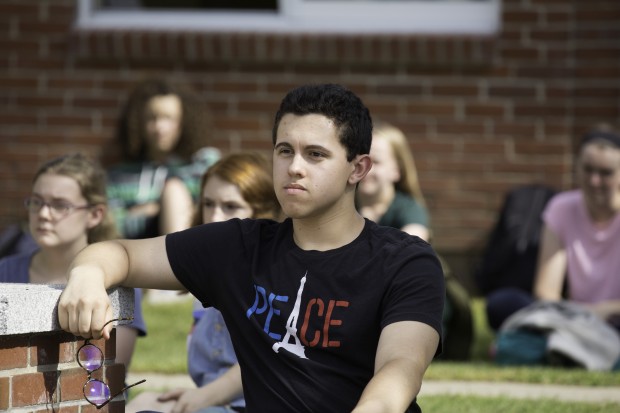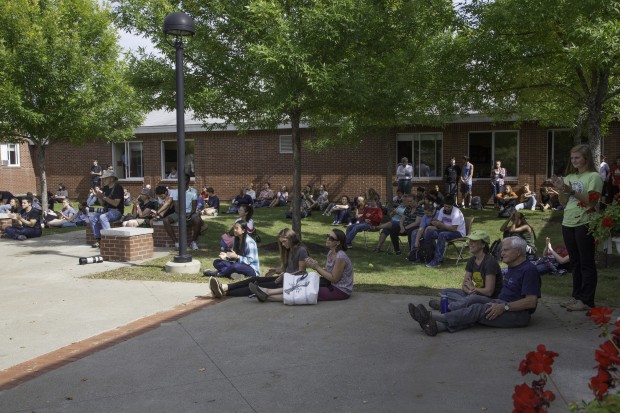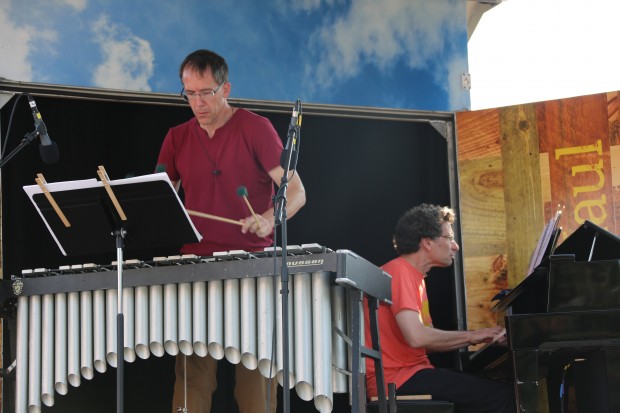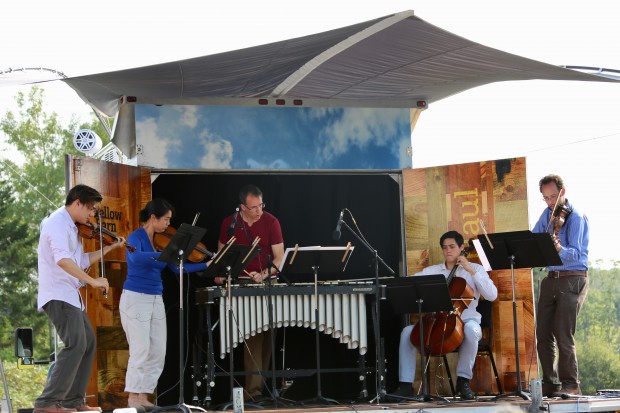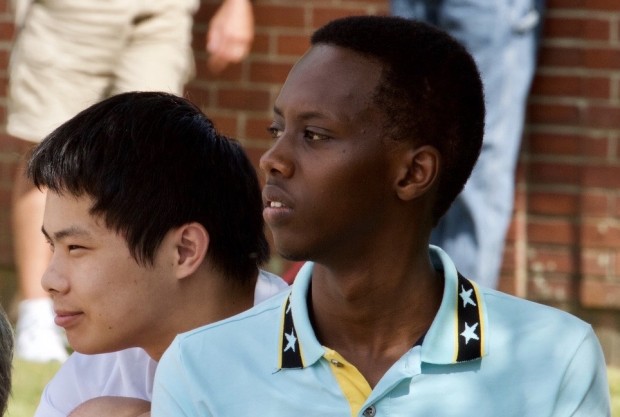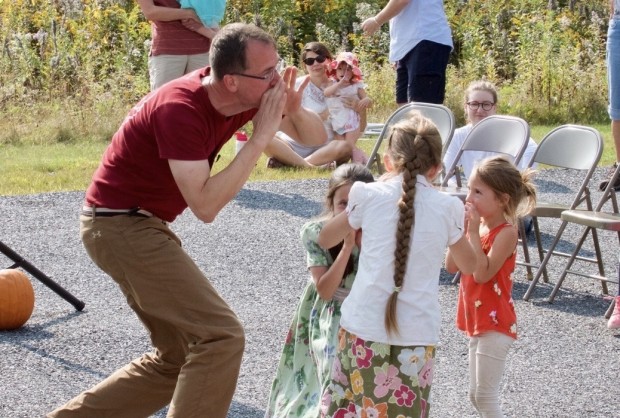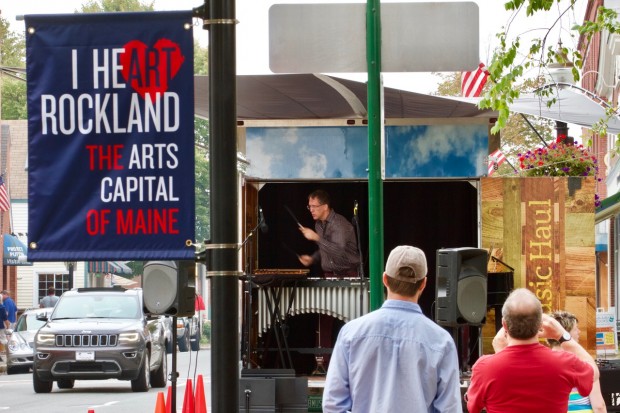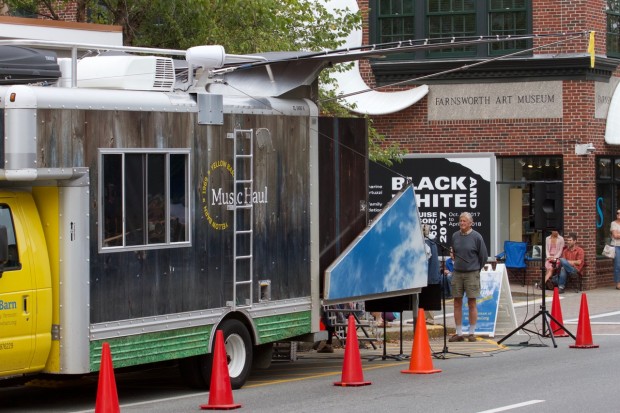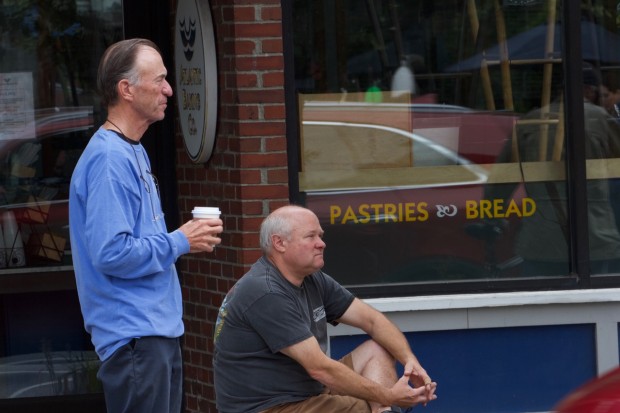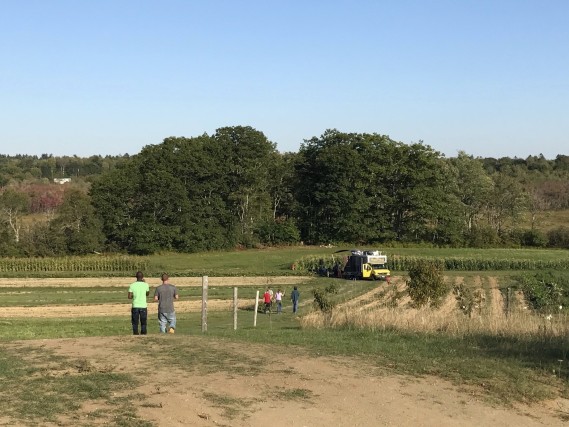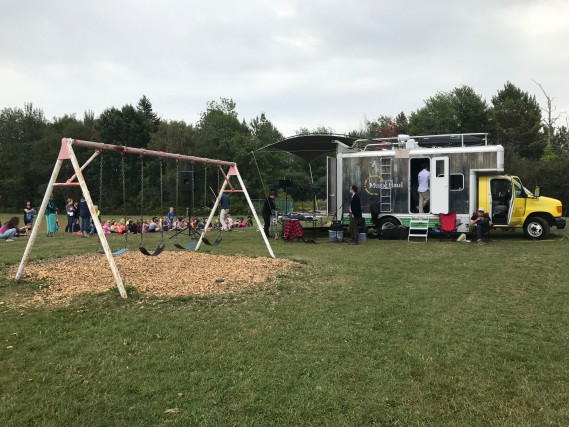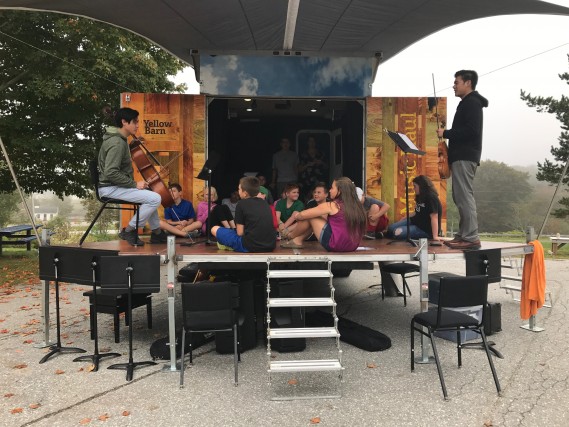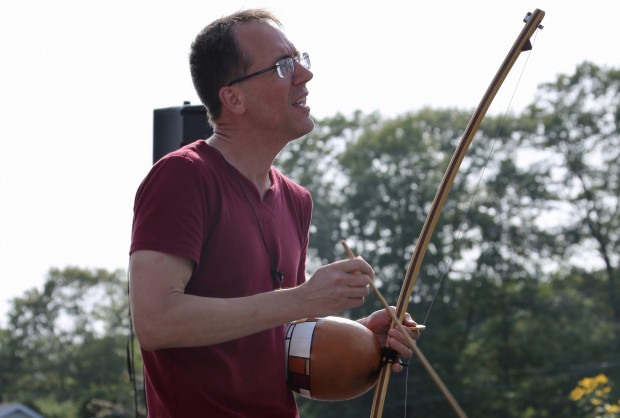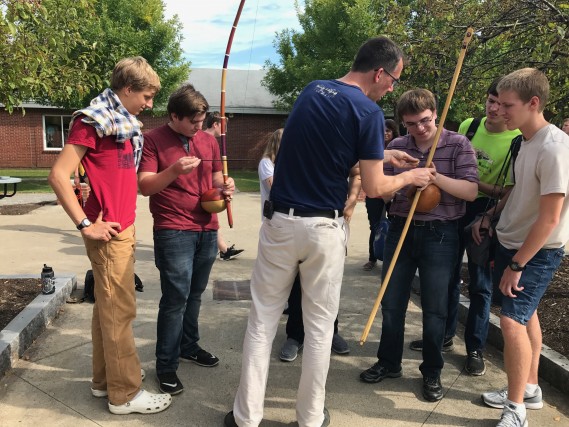Robert Mann (1920-2018)
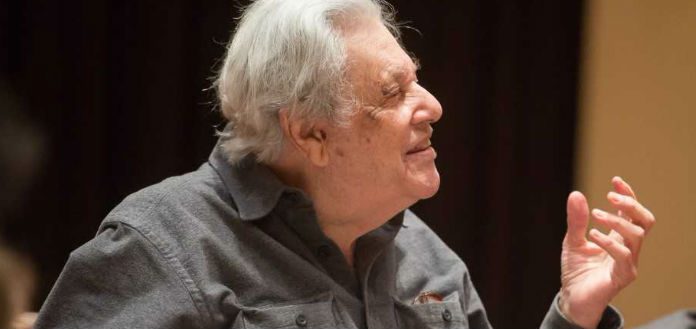
We are deeply saddened by the passing of Robert Mann, our dearest friend, mentor, and inspiration. The words of his quartet family speak for all of us as we begin a new year—a year shaped, like so many others we have known and will know again, by Mr. Mann's pure, unending love of music.
We, the remaining Juilliard Quartet colleagues of Robert Mann, deeply mourn his passing this past week. We send our condolences to his dear wife, Lucy, to the family, to all his friends and to all his former students, who had the good fortune to be guided and inspired by him, as we were. His students are, of course, such a wonderful and important part of his legacy.
In today’s world, it may be hard for some to comprehend the deep significance of Robert Mann’s legacy. Bobby devoted himself passionately and daily to insight of all kinds, hungry as he was to experience the joy of discovery at every possible moment.
Rehearsals with Bob Mann were always a highly energized search for beauty, order, coherence, insight, truth and catharsis, a seemingly unlikely mix of things. Almost in contrast, performances with Bobby were passionate abandon in the service of the composers’ imaginations, while holding the ship steady towards its goal. Bobby deeply respected and understood the necessary interplay of rational and irrational thought and feeling requisite to great art of any kind and he helped each of us welcome both into our musical and personal lives, expression and process.
Chamber players are the peacemakers of music, musicians rejecting the “older” model of heroism, to replace it with the heroism of the peacemaker: he/she who struggles to promote understanding through shared honest interaction. Bob Mann, you were our general, leading us into musical battle for the “musical” common good.
We would like to ask the student who reads these words to ponder and try and grasp just how much patient hard work, listening, honesty, self-appraisal and love of music it takes to become a Robert Mann. The hard work is not to be underestimated. And the motivation was pure: to be worthy of the genius of the composer.
Sadly, most critics were never able to recognize Robert Mann’s most important asset: his great and innate ability to sing on the violin and render unforgettable performances of the quartet literature’s most intimate and lyrical phrases and moments, whether the Cavatina from Op. 130, the Largo of Op. 135, the slow movement of Ravel and Debussy quartets or the Largo of Haydn’s Op. 76 no. 5. The voice was always his own: plain-spoken, loving, vulnerable, always generously reaching out.
We each feel so lucky to have shared a good portion of our lives, musical and non-musical, with this amazing and wonderful human being. And though Bobby is with us no longer, we will ever feel his beneficent influence and will continue to share his memory and legacy with all who will listen.
Rest in peace, dear Bobby.
Earl Carlyss, violin, 1966-1986
Samuel Rhodes, viola, 1969-2013
Joel Krosnick, cello, 1974-2016
Joel Smirnoff, violin, 1986-2009
Reprinted with the permission of the Juilliard String Quartet
Yellow Barn Listening
Listen to festival performances from the Big Barn in Putney, Vermont.
Watch videos from Yellow Barn summer festival performances
2019 summer season
Speak Music
Andrew Hamilton O'ROURKE
Wolfgang Amadeus Mozart Concerto in A Major for Piano and String Quintet, K.414
Eric Nathan Some Favored Nook
Claude Debussy Danses sacrée et profane (Sacred and Profane Dances)
Igor Stravinsky The Rite of Spring
Elliott Carter Saëta (Arrow) from Eight Pieces for Four Timpani
Anna Thorvaldsdottir Ró (Serenity)
Simon Bainbridge Four Primo Levi Settings
Stefan Wolpe Arrangements of Six Yiddish Songs
Eugène Ysaÿe Trio à cordes “Le chimay,” Op. posth.
André Previn Vocalise
Antonín Dvořák Violin Sonata in F Major, Op.57 (B.106)
Salvatore Sciarrino Tre duetti con l'eco (Three Duets with an Echo)
Sándor Veress Memento
Earl Kim Where Grief Slumbers
Tōru Takemitsu Orion
Harrison Birtwistle Crescent Moon over the Irrational
Stephen Coxe About That Time
Jörg Widmann Fieberphantasie (Fever Fantasy)
Brett Dean Recollections
Clara Schumann Romance in A Minor, Op.21
Brett Dean Equality
Brett Dean Huntington Eulogy
Benjamin Britten Winter Words, Op.52
Brett Dean String Quartet No. 2 “And once I played Ophelia”
Philippe Schoeller Isis II
Mark Applebaum Control Freak
Frédéric Chopin Rondo in C Major for Two Pianos, Op. posth. 73
Brett Dean Winter Songs
John Cage Dream
2018 summer season
George Frideric Handel Concerto Grosso in D Major, Op.6 No.5, HWV 323J
John Cage Solo for Voice 25 (Cheap Imitation No.2) from Song Books
John Cage Solo for Voice 49 from Song Books
John Cage Solo for Voice 52 (Aria No.2) from Song Books
Einojuhani Rautavaara Ballad for Harp and Strings
Gustav Mahler Lieder eines fahrenden Gesellen “Songs of a Wayfarer”
John Cage Experiences No.2
Salvatore Sciarrino Le voci sottovetro
Hans Abrahamsen Liebeslied
Philippe Hersant Usher
Stephen Coxe Entretien
Oliver Knussen Triptych
Wolfgang Amadeus Mozart String Quintet in G Minor, K.516
César Franck Piano Quintet in F Minor
Robert Mann "Little Red Hen" variations
Antonín Dvořák Piano Trio in G Minor, Op.26
Franz Schubert Adagio from String Quintet in C Major, D.956
Chinary Ung Spiral
Maurice Ravel String Quartet in F Major
Alexandre Lunsqui Deflectere II
Shulamit Ran Moon Songs, a song cycle in four acts
Béla Bartók Violin Sonata No.2, Sz.76
György Kurtág 12 Microludes for String Quartet, Op.13
Benjamin Britten String Quartet No.1 in D Major, Op.25
Christopher Rouse Compline
Franz Schubert Fantasie in F Minor, D.940
Alexander Raskatov Monk’s Music, Seven Words by Starets Silouan (In memoriam Mieczyslaw Weinberg)
Nicholas Maw Roman Canticle
Harrison Birtwistle 9 Settings of Lorine Niedecker
Maurice Ravel Ballade de la reine morte d'aimer
Steven Mackey Ars Moriendi, nine tableaux on the art of dying well
Steven Mackey Fusion Tune
Steven Mackey Four Iconoclastic Episodes
Ludwig van Beethoven String Quartet in F Major, Op.135
Sofia Gubaidulina Perception, for soprano, baritone, string septet, and tape
Erich Wolfgang Korngold Suite, Op.23
Steven Mackey On All Fours
Jacob Druckman Bō
Arnold Schoenberg Phantasy, Op.47
Luciano Berio O King
Edison Denisov Clarinet Quintet
Leon Kirchner String Quartet No.4
Luciano Berio Folk Songs
Elliott Carter String Quartet No.1
Viktor Suslin Grenzübertritt “Crossing Beyond”
Béla Bartók The Miraculous Mandarin, Op.19, Sz.73 (BB 82)
Dieter Ammann A(tenir)tension
Johannes Brahms Piano Quartet in G Minor, Op.25
Arnold Schoenberg Notturno
2017 summer season
Johann Sebastian Bach Brandenburg Concerto No.3 in G Major, BWV 1048
James Tenney Maximusic
Franz Joseph Haydn Piano Trio in E-flat Major, Hob. XV:30
Franco Donatoni Alamari
Eric Nathan Quartet for Oboe and Strings
Maurice Ravel Sonata for Violin and Cello
Johann Sebastian Bach Selections from Cantatas BWV 197, 88, 47, and 42
Jörg Widmann Zirkustänze
Jörg Widmann String Quartet No.1
Ludwig van Beethoven Sonata in F Major, Op.24 “Spring”
Jörg Widmann Oktett
Giacinto Scelsi Khoom “Seven episodes of a love story and of a non-written death in a faraway land”
Henry Purcell Sonata in A Minor, Z.804
Toshio Hosokawa Landscape II
Pavel Haas String Quartet No.2, Op.7 “From the Monkey Mountains”
Sofia Gubaidulina Galgenlieder à 3
Alban Berg Lyric Suite
Sergiu Natra Music for Violin and Harp
Wolfgang Amadeus Mozart String Quartet in G Major, K.387
Alexander Raskatov Five Minutes from the Life of W.A.M.
2016 summer season
Johannes Brahms Poco Allegretto from Symphony No.3, Op.90
Michel van der Aa Oog
George Frideric Handel Concerto Grosso in F Major, Op.6 No.2, HWV320
Arnold Schoenberg Brettl-Lieder (Cabaret Songs)
Jörg Widmann 180 beats per minute
Charles Wuorinen Spinoff
Alexander Raskatov Dolce Far Niente “Sweetness of Doing Nothing”
Oliver Knussen Prayer Bell Sketch
Toshio Hosokawa Drei Engel-Lieder (Three Angel Songs)
Johannes Brahms Sonata in E-flat Major, Op.120 No.2
Hans Abrahamsen Schnee “Snow”: 10 Canons for 9 Instruments.
James MacMillan Visions of a November Spring
Sofia Gubaidulina Garden of Joy and Sorrow
Thomas Adès Lieux Retrouvés
Dmitri Shostakovich String Quartet No.9 in E-flat Major, Op.117
Beat Furrer Aer
Luciano Berio Naturale
Charles Ives The Things Our Fathers Loved
Charles Ives Tom Sails Away (1917-1921)
Charles Ives Two Little Flowers
Charles Ives General William Booth Enters into Heaven
Charles Ives Charlie Rutlage
Charles Ives The Housatonic at Stockbridge
Charles Ives Down East
Charles Ives The Side Show
André Caplet Les Prières
Susan Botti Bird Songs
Franz Schubert Sonata for violin and piano in A Major, D.574 “Duo”
György Ligeti String Quartet “Metamorphoses nocturnes”
Ted Hearne Vessels
Johannes Brahms String Quartet in A Minor, Op.51 No.2
John Zorn The Aristos, ten metaphysical ambiguities for violin, cello and piano
Travis Laplante Thank You Is Not Enough
Magnus Lindberg Clarinet Trio
Béla Bartók Sonata No.1, Sz.75 for violin and piano
Stefano Gervasoni Phanes
Stefano Gervasoni An, Quasi una serenata, con la complicitá di Schubert
Wolfgang Amadeus Mozart String Quartet in B-Flat Major, K.589
George Crumb Books I-V from Madrigals
Stefano Gervasoni Adagio ghiacciato, da Mozart, K.356
Arnold Schoenberg String Trio, Op.45
Matthias Pintscher A Twilight’s Song
Franz Schubert String Quartet in A Minor, D.804 “Rosamunde”
Stefano Gervasoni Luce ignota della sera “Unknown Evening Light”, da Robert Schumann, Zwölf Vierhändige Klavierstücke für kleine und große Kinder, Op.85 No.12 for piano and electronics
Stefano Gervasoni Sonatinexpressive
Felix Mendelssohn Sonata in D Major, Op.58 for cello and piano
2017 Yellow Barn videos
Watch performances from Yellow Barn's 2017 Summer Festival in Putney, Vermont.
Happy Birthday, Yellow Barn Music Haul!
Yellow Barn Music Haul: Then and Now
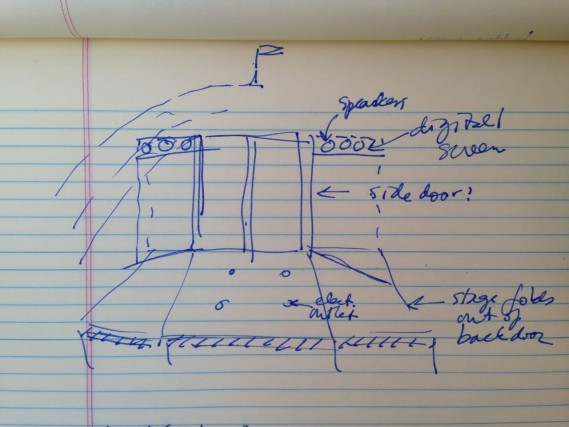


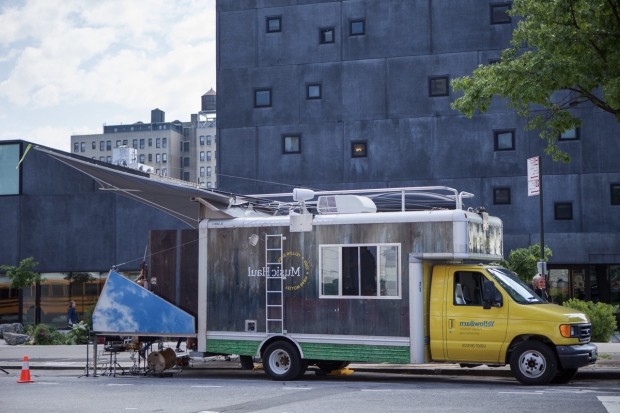

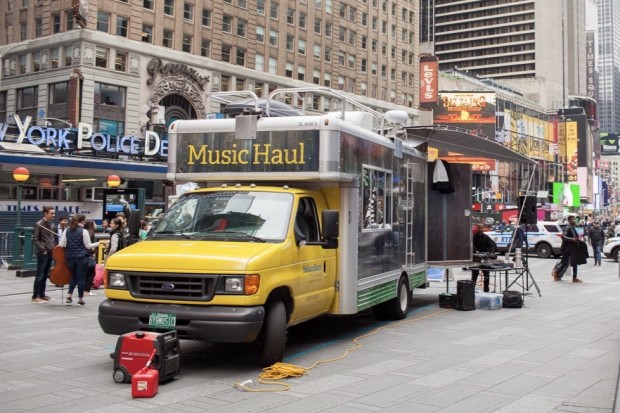
On October 10, 2015, Yellow Barn Music Haul came home to Putney, Vermont. Since then, our precocious traveling concert hall has brought Music No Boundaries to Baltimore, Dallas, Midcoast Maine, Boston, and New York City. Wherever she goes, from Times Square to West Baltimore, she is giving people the shared experience of listening to chamber music on common ground.
In celebration of her second birthday, we brought our "Music Haul Playground" to Downtown Baltimore Child Care, dropping the stage like a second jungle gym, filling recess with music and dancing. When we packed up to go, the music didn't stop. Music Haul continued to play from one neighborhood to the next, for passers-by, construction workers, police officers, bus drivers, and countless others, capturing their attention in an unexpected moment.
For the next two months, Music Haul will continue to live in Baltimore, bringing "Music Haul Playground" to schools, driving and playing music through her external speakers, and generally being a resource for social causes throughout the city, such as collecting goods for Puerto Rico. In addition, she will return to Lockerman-Bundy Elementary School and other OrchKids schools that she visited during previous trips to Baltimore.
Fall 2017 Music Haul Sightings in Baltimore:
Downtown Baltimore Child Care
Furman L. Templeton Preparatory Academy
Lockerman-Bundy Elementary School
Mary Winterling Elementary School
OrchKids, a program of the Baltimore Symphony Orchestra
The Park School of Baltimore
Follow us on Facebook and Twitter to find out where Yellow Barn Music Haul is traveling!
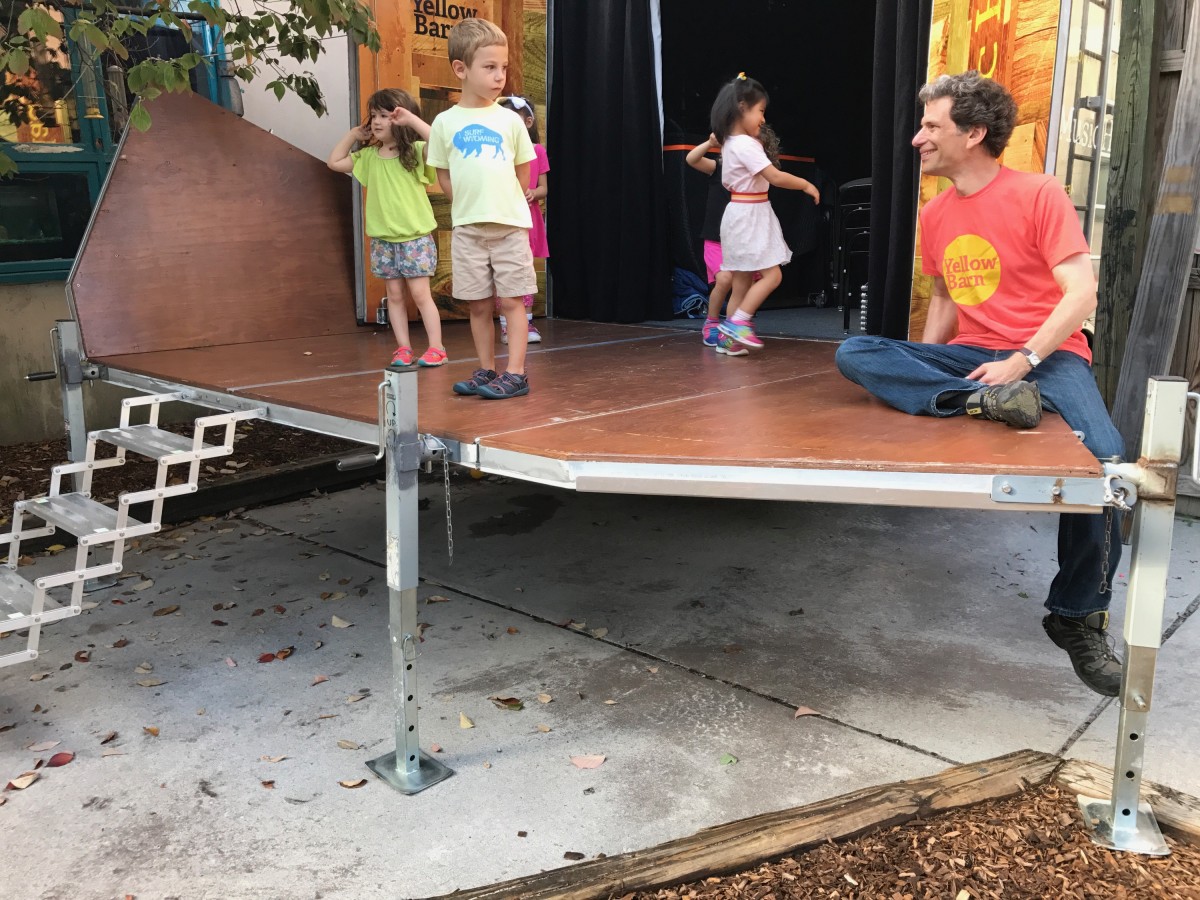
Dancing to Beethoven and celebrating Yellow Barn Music Haul's 2nd birthday at Downtown Baltimore Child Care
Eric Nathan on "Some Favored Nook"
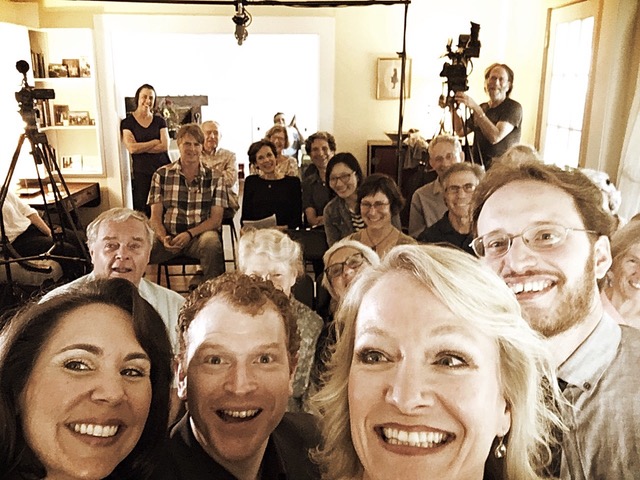
Some Favored Nook live recording in Putney (In front, left to right: Jessica Rivera, Andrew Garland, Molly Morkoski, Eric Nathan)
Composer Eric Nathan reflects on his September 2017 Artist Residency, Some Favored Nook, at Yellow Barn:
Soprano Jessica Rivera, baritone Andrew Garland, pianist Molly Morkoski and I recently completed an Artist Residency at Yellow Barn to workshop and record my new 45-minute dramatic cycle, “Some Favored Nook,” based on texts by Emily Dickinson and Thomas Wentworth Higginson, adapted by librettist Mark Campbell.
Yellow Barn afforded us an invaluable opportunity to have an intense period of uninterrupted time over the course of a few days to rehearse and workshop the piece, and then record it in front of a live audience as part of a private recording session at Executive Director Catherine Stephan’s house. While we were in-residence we also had wonderful opportunities to engage with students and faculty at the Greenwood School and with Yellow Barn supporters in the post-recording session Q&A. Both chances to engage with the community were especially valuable to me as a composer, because it allowed me to hear directly from the audiences how the music, performances and subject matter made them think and feel.
“Some Favored Nook” takes place in Civil War-era America and is inspired by the significant correspondence between an unlikely pair: Emily Dickinson and Thomas Wentworth Higginson. Dickinson was practically unknown during her day but is now one of the world’s most widely read poets, and Higginson was a figure who loomed large in literary and political spheres of his time, but who is now relatively forgotten. My work focuses on Dickinson's private struggle as women poet in a patriarchal society and Higginson's public struggles for women’s rights, women poets, and the abolition of slavery. I place Dickinson and Higginson's writings in the context of the Civil War and society of the time, and uses the texts as a lens to view social, political and cultural issues of this early chapter in American history – civil rights, women's rights, the effects of war, as well as many of the themes that fill Dickinson's poetry, such as love and death – all issues that are as relevant today as they were in Dickinson’s time.
Dickinson and Higginson’s correspondence spanned twenty-four years and offers an intimate look into Dickinson’s private world as well as to Higginson’s involvement in major social and political issues of the day, as the commanding officer of the First South Carolina Volunteers, the first black regiment in the Civil War. Higginson was also a noted supporter of women poets, and published the first collection of Dickinson’s poetry after her death. I set excerpts from Dickinson’s letters and poems she sent to Higginson, but as many of Higginson’s letters to her are lost, Higginson’s texts are set from his own essays as well as diaries from his “Army Life in a Black Regiment.”
This project has been a number of years in the making. It began as a proposal for my Rome Prize fellowship at the American Academy in Rome in 2013-14. While I was in Rome, I assembled texts by Dickinson and Higginson. A subsequent visit to Emily Dickinson’s house in Amherst sparked the initial measures of my piece, after I experienced the sense of space and light in Dickinson’s room. However, it was not until 2016 when the librettist Mark Campbell molded the texts into a compelling dramatic and thematic arc that ideas for my musical work began to fully take shape. I began composing in earnest in January 2017 during a residency at Copland House in Cortlandt Manor, where I lived and composed for three weeks in composer Aaron Copland’s home. It was incredibly humbling and inspiring to write music in Copland’s house, especially since his settings of Dickinson’s poetry in his “Twelve Poems of Emily Dickinson” remain some of the most treasured and iconic musical settings of her poetry. I completed my work in July 2017, back at the American Academy in Rome as part of a Visiting Artist residency.
For our residency at Yellow Barn, our goals were to workshop, rehearse and record “Some Favored Nook,” so that we could have documentation to entice presenters to sponsor the official world premiere and a subsequent multi-city tour in 2018-19 and/or 2019-20. Yellow Barn has been so supportive of this project and arranged for the work to be professionally video and audio recorded. The Brown Arts Initiative was also very helpful in making this workshop possible through a Research and Development Grant.
Our rehearsal process at Yellow Barn was incredibly collaborative. We experimented with various parameters of the text setting and performance techniques. For instance, during one rehearsal Molly Morkoski suggested we have Jessica Rivera sing a section of the music directly into the piano, to create an otherworldly resonance. I had marked this section “distantly” in the score, but this new technique brought out other aspects in the music that arose from our discussions of the dramatic unfolding of the work, and so we decided to keep this technique in the performance. It is at this moment that Dickinson sings her poem, “A Death blow is a Life blow to some,” to the tune of “America,” after Higginson has recited phrases from his diary recounting attending to wounded soldiers after a battle. Throughout the entire rehearsal process, we watched the characters of Emily Dickinson and Thomas Wentworth Higginson come to life, and how their conscious and unconscious emotional states could be translated from the score into dramatic performance.
The chances to engage with the Yellow Barn community were for me some of the most meaningful experiences of the week. The recording session took place in the intimate setting of a living room, and this intimacy combined with the inquisitiveness of the Yellow Barn audience fostered a remarkable discussion. Audience members shared how the performance and story affected them personally, and their questions and my colleagues’ responses helped me see our work in new light. Similarly, I was excited to hear the imaginative responses from students as they described the worlds and ideas that the musical motives conjured in their minds.
The entire week residency was a beautiful testament to the communicative power of music. We commune with music to share ideas and emotions and reflect on stories of the past and present. In such a divisive time, it was nourishing to be reminded of the unifying power of music, especially on such a small and personal scale, and how the exchange of ideas helps us see and understand our world.
_____________________
This project has been made possible, in part, by the Brown Arts Initiative.
Music No Boundaries: Midcoast Maine
MUSIC NO BOUNDARIES: midcoast Maine
September 13-19, 2017
Following its first tour of New York City, Yellow Barn Music Haul brought the national touring program "Music No Boundaries" to five area schools (St. George School, South Elementary School, Gilford Butler/Owl’s Head School, Edna Drinkwater School, and Lincoln Academy), as well as the Coastal Maine Reentry Program, Damariscotta-Newcastle ArtWalk, Bremen Public Library/Bremen Town Center, and the Farnsworth Museum. After six days in Maine, Yellow Barn Music Haul stopped in Boston on the way home, returning to the Epiphany School in Dorchester, and giving a sidewalk performance in Boston's South End.
Locations and Partners
For complete tour and program information, go to musichaul.org.
South Elementary School, Rockland, ME
Edna Drinkwater School, Northport, ME
Maine Coastal Regional Reentry Center Farm, Belfast/Swanville, ME
St. George School, St. George, ME
Lincoln Academy, Newcastle, ME
Owls Head School, South Thomaston, ME
Damariscotta-Newcastle ArtWalk, Damariscotta, ME
Bremen Public Library, Bremen, ME
Bremen Town Center, Bremen, ME
Farnsworth Museum, Rockland, ME
Boston Extension—Epiphany School, Dorchester, MA
Boston Extension—Shawmut Ave. at W. Concord St., Boston, MA
MUSICIANS
Greg Beyer, percussion
Seth Knopp, piano
Sound Engineer: Dev Ray
Stage Managers: Michael Bradley Cohen and Christopher Grant





